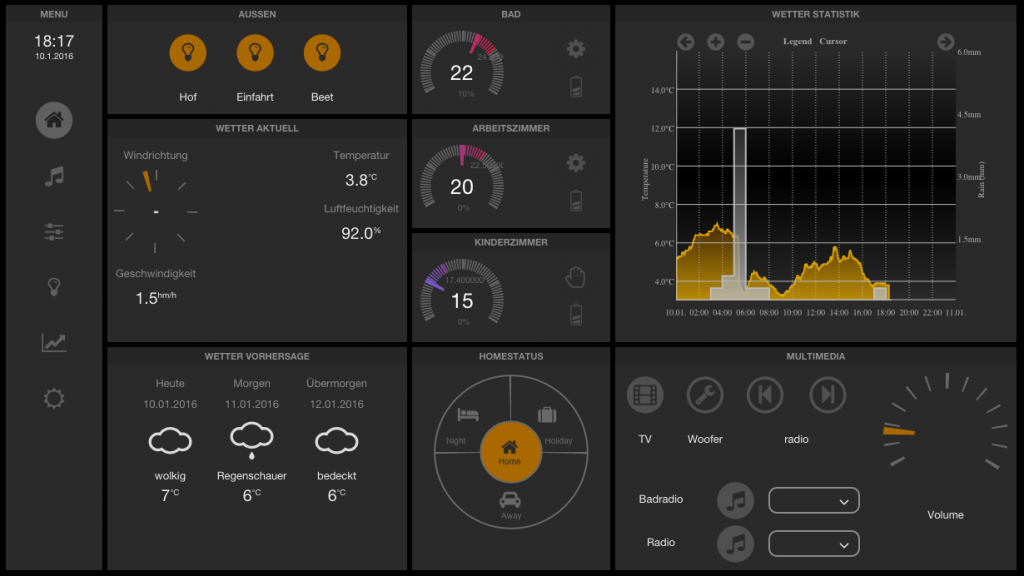For a while I was fairly happily running OpenHAB to control and automate my HomeMatic devices. I had a few rules configured to trigger outdoor lighting and the like. There were a few delays occasionally, though, which I think may have been due to network timing or simply due to a delay in receiving the events from the CCU2.
At some point a few weeks ago I decided that enough was enough. I moved all automation rules directly onto the CCU2. After some playing around and struggling with a few details I have a setup that works quite well now. Most importantly it is faster than it used to be, which was the whole point of the exercise.
Next to the slowness in automation I never liked the OpenHAB UI - the classic UI that is. The paper UI looks a lot nicer, but also that lacks a few features I would like to have plus is not really release for production yet.
In any case I decided it was time to move to something else. I started by exploring the benefits of using MQTT. I did that with the help of Mosquitto, hm2mqtt and Home Assistant. I even contributed some code to Home Assistant to make it work with the json messages sent by hm2mqtt. I like Home Assistant a lot, simply because it is written in Python and as such makes contributing easy for me. However, also the UI did not completely satisfy me, so I kept looking.
Sometime last week then I revisited FHEM. I had looked at FHEM in the beginning of my home automation journey and abandoned it at the time. The two main reasons were the UI, but more importantly the lack of support for using a CCU2 to control HomeMatic devices.
Luckily that has changed a lot now. While MQTT is of course always an option there is the HMCCU module now. That finally provides a way to control a CUU2 plus the module is under active development (as opposed to the old HMRPC module).
Next to that, there is also the new Tablet UI now that is visually appealing and really is absolutely what I was looking for. It is based on HTML , CSS and JavaScript and as such works in virtually any modern browser. More importantly, it is easy enough to customise the interface.
What you see here is a snapshot of my current setup. It is very much a work in progress now, but it already covers a lot more features than I used to have when still running on OpenHAB. I will post more detailed instructions and lessons learned once I am done, of course.
The one thing I currently find lacking in FHEM is the connectivity from outside your home. OpenHAB’s my.openhab.org service is quite a nice feature which I’d like to see in FHEM as well. Using simple port forwarding will also work, I guess, but also that I still need to setup.
The other downside of FHEM is, obviously, that it is written in Perl, which I hate with a passion. I did share my first fix for HMCCU already, though, so I guess I will adapt over time. :)






Leave a comment